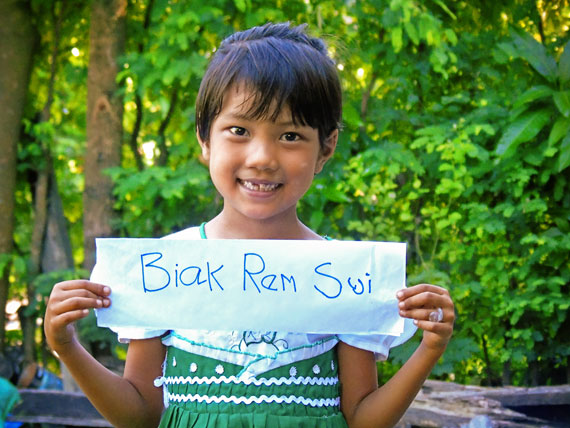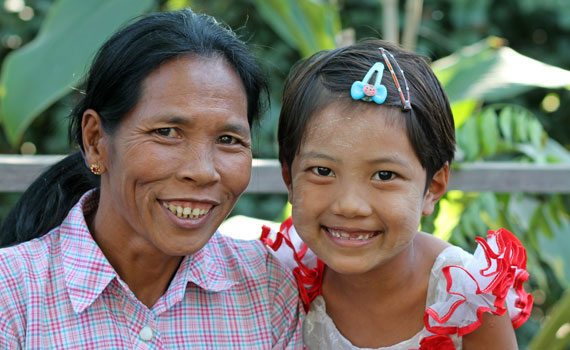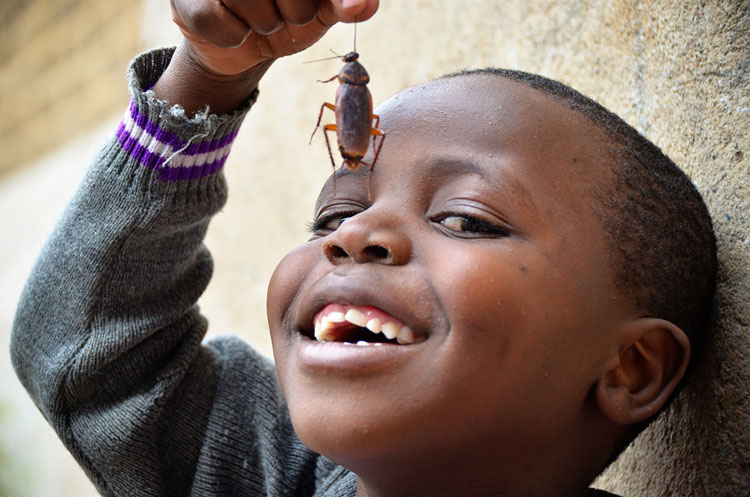“I’m sorry, but you must leave our home, our friends and our village. I can no longer afford to care for you.”
Those were the heartbreaking words that Ren Hawi dreaded to speak to her 5-year-old daughter, Biak Rem Sui. But the day came when she had to say them. With grief, Ren took Biak to an orphanage that was several hours from their home in a remote village of Myanmar. Then mother and little daughter tearfully said goodbye.
Ever since her husband died of a heart attack not long after Biak’s birth, Ren had been going it alone as a single parent. She managed to scrape out a living selling vegetables when Biak was young, but as her daughter grew older so did her needs—including her need to attend school. Ren searched for additional work to supplement her income, but no one would hire her, in part because of a disability that makes it difficult for her to walk or stand.
If both mother and daughter were to survive, and if Biak was to have any hope of a better life, an orphanage was the only solution.
For the next 3 years, Biak enjoyed regular meals, friends, and the opportunity to attend school while she lived at Nawl Nawl’s Orphanage—all at no cost to her mother. But the hearts of mother and daughter ached for one another. And God’s heart surely ached, not only for Ren and Biak, but also for the thousands of other impoverished and divided families in similar circumstances in Myanmar.
When it began to dawn on us that as many as 2/3rds of the children in Myanmar’s many orphanages are not orphans, we began asking questions and looking for solutions. We eventually realized that, if we could help impoverished parents lift themselves from poverty, they would no longer resort to sending their children to far-away orphanages. Rather, they could care for their children themselves, and they could afford their school fees.
And so we began offering what we called “Opportunity Loans” to poor Christian villagers in Myanmar, enabling them to start small self-sustaining businesses, like growing cash crops. Ren received a $500 loan to start raising some pigs, something she can do even with her disability. She’s not only “bringing home the bacon” in both a figurative and literal sense, but she’s also bought Biak back home.
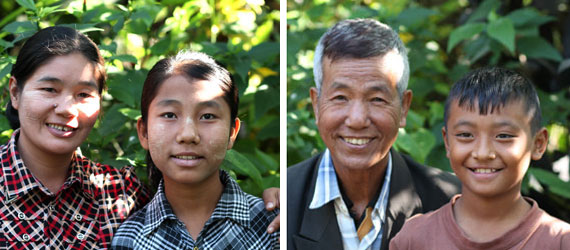
At left, Ngin Thian Cin’s father was an abusive alcoholic who destroyed his marriage. Ngin’s mother feared that her tiny income from a snack shop wouldn’t be enough to provide for their needs. With a loan of $300 she can expand her shop and earn about $8 a day, which is enough to provide for her and her daughter’s needs. At right, after nine-year-old Thang Za Sian’s father died in a gas explosion, his mother became mentally ill. Because of a loan to his grandparents to start a business selling rice, he is able to live with them, rather than at an orphanage.
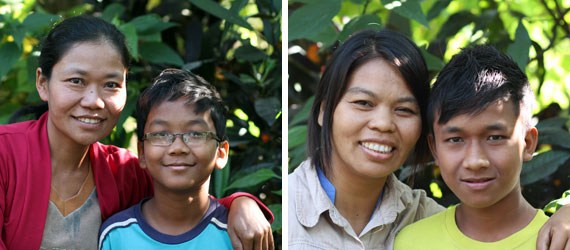
At left, Cin Muang Lian Tuang’s father abandoned his family. Cin’s mother was determined to provide for her son. She took a job to clean an office but only earned $15 a month. With a loan of $300 to start a business selling clothing, she is now earning $5-$7 a day. At right, Go Sian Tuang’s father died from a drug overdose. A loan to his mother helped her expand her small grocery business, enabling her to provide for their daily needs.
Ren and Biak’s story is being repeated with increasing frequency as we are enabled to offer Opportunity Loans in more of Myanmar’s mountain villages. Although we began over a decade ago seeking orphanages in Myanmar to assist, our goal now is to empty every orphanage in the world, and see every child returned to caring Christian parents or relatives! To that end, your investments in our Foster/Kinship Care Initiative are reuniting families!

